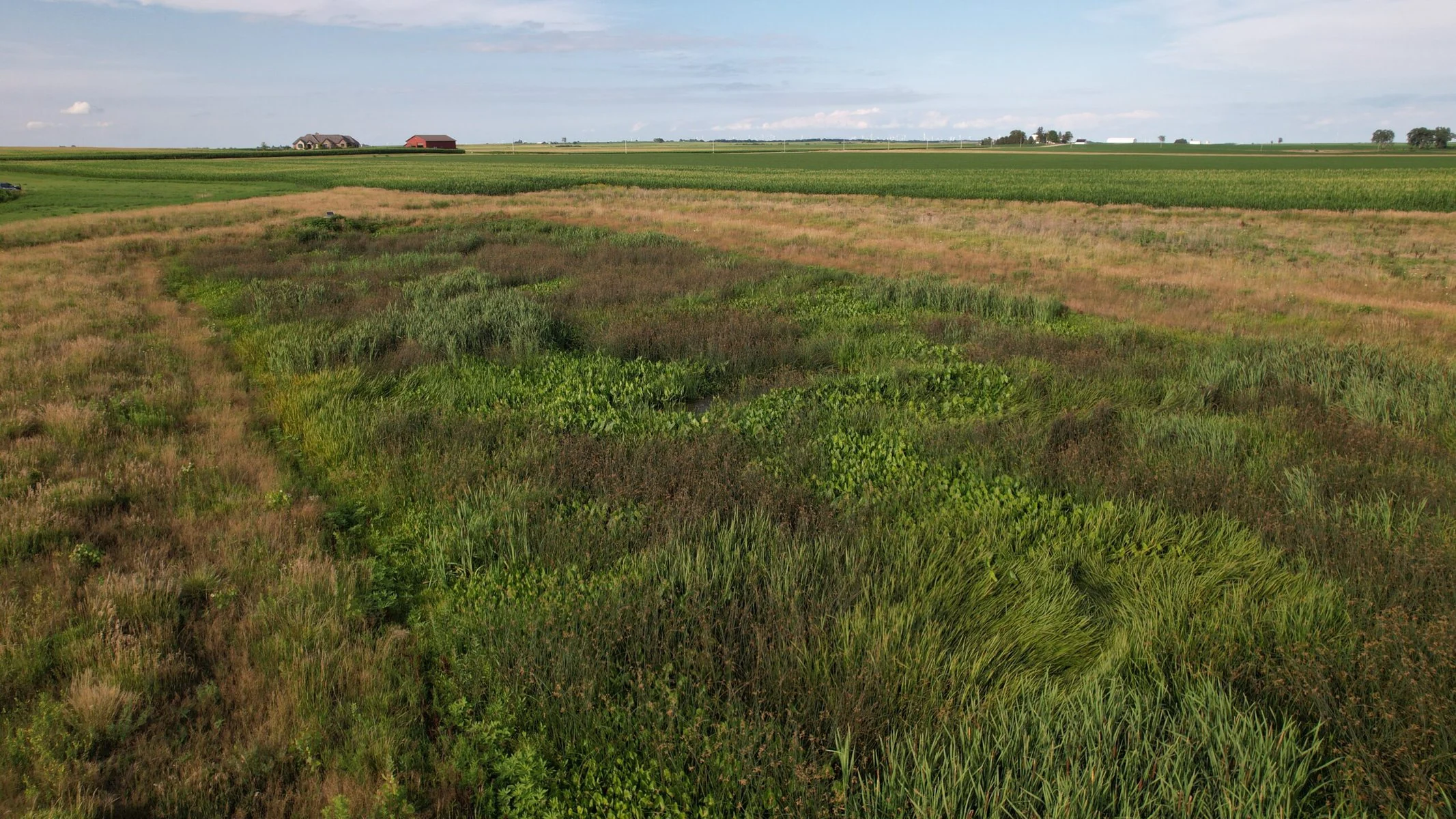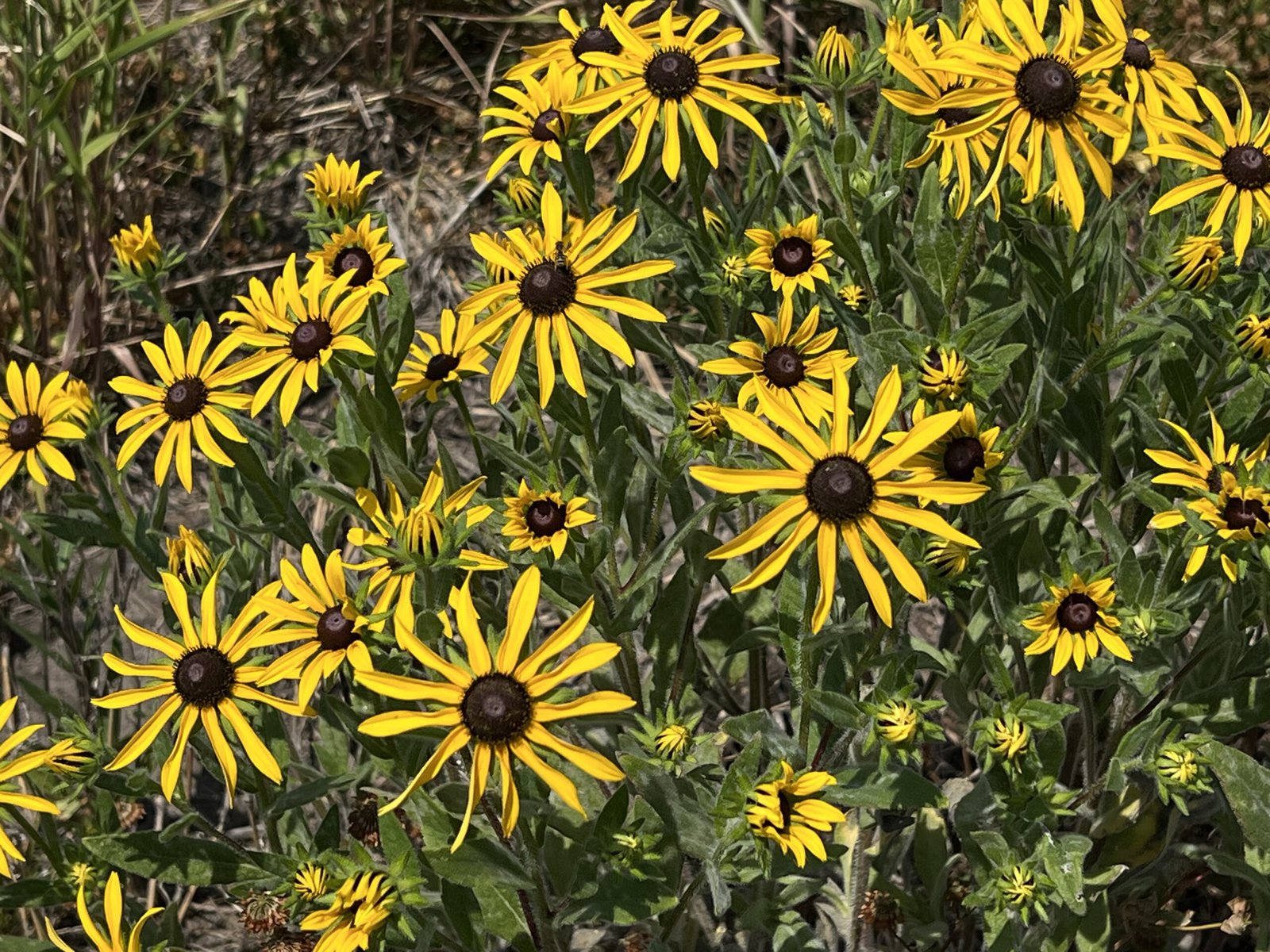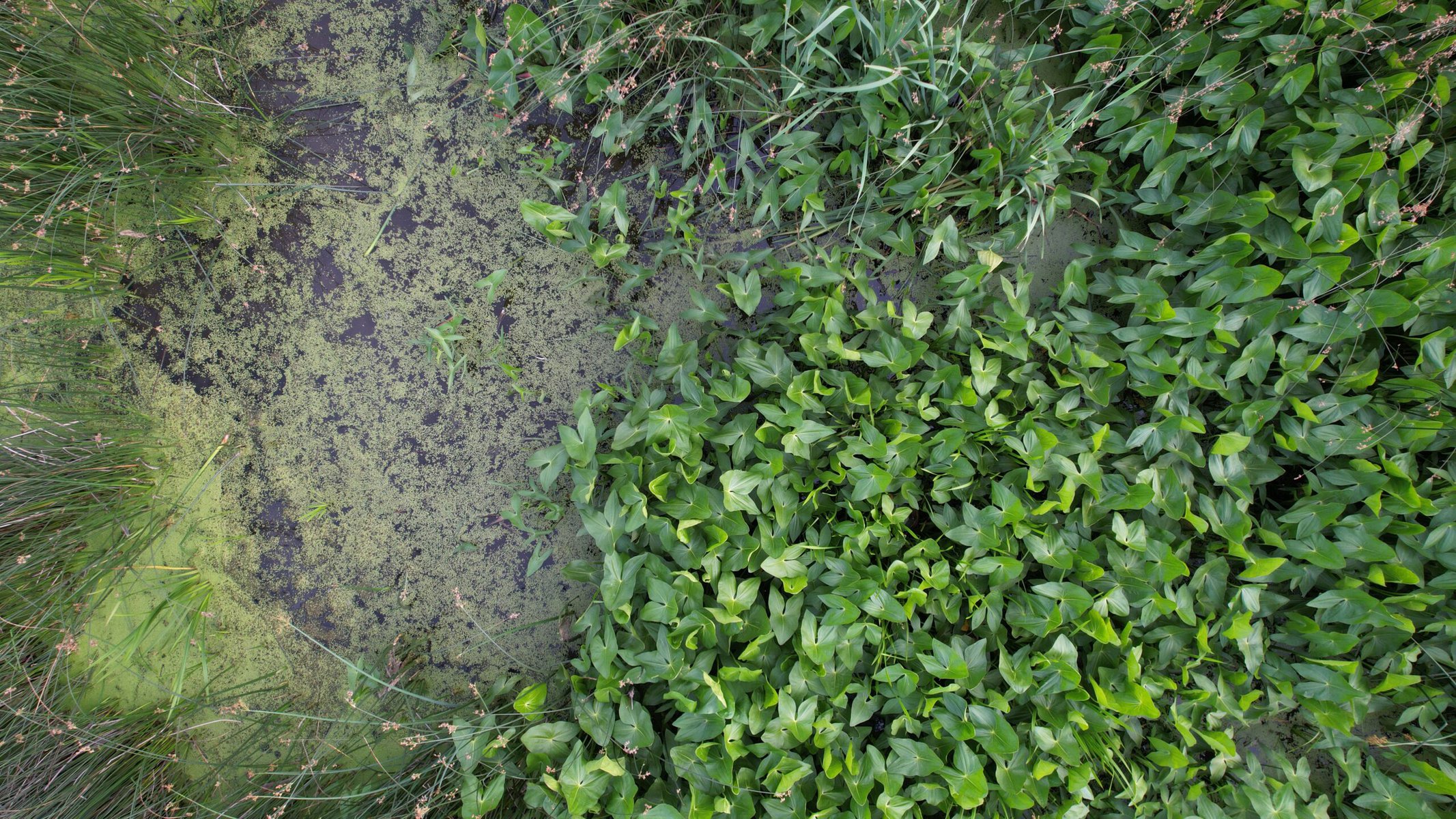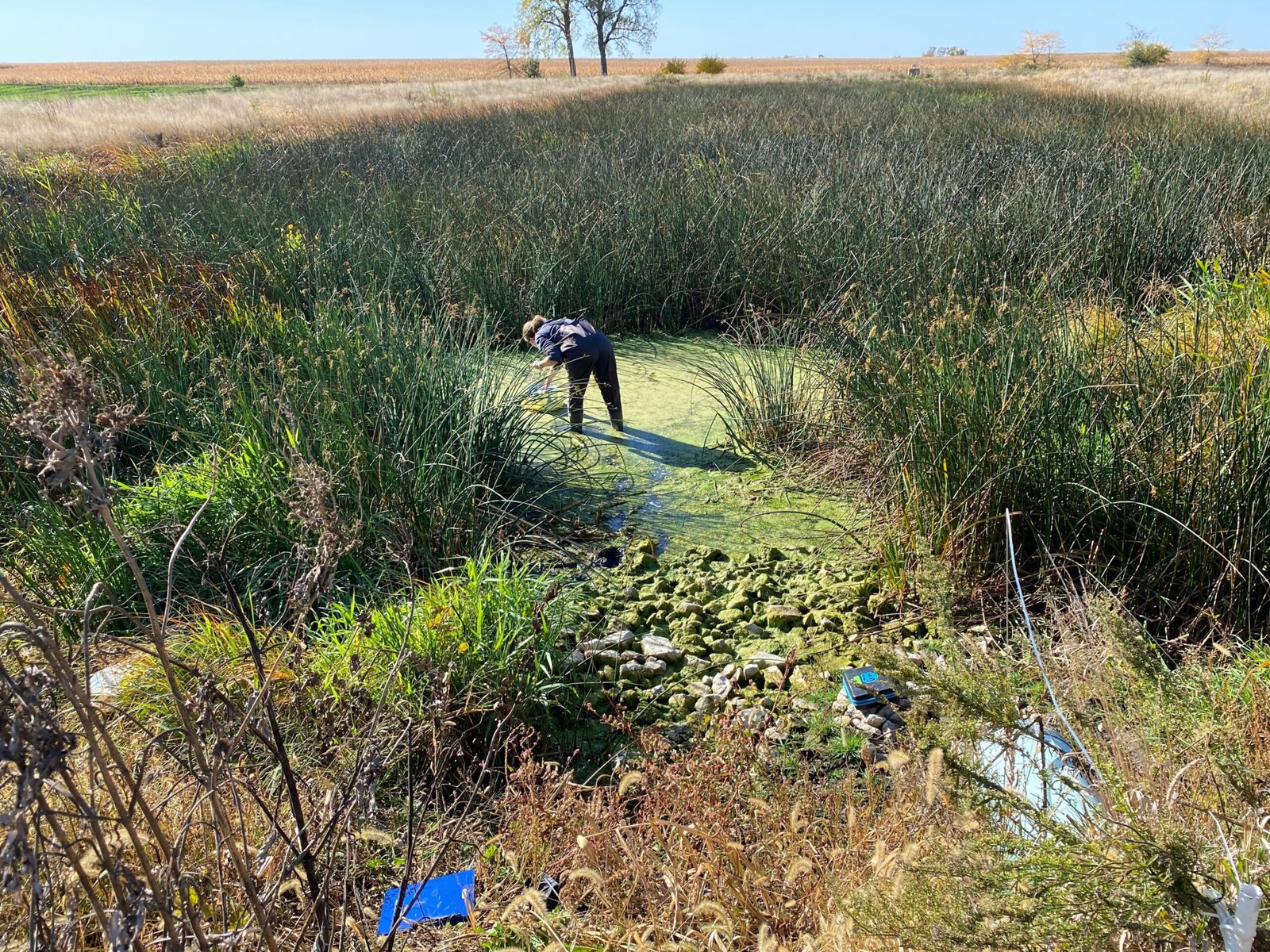To date, The Nature Conservancy has put in about 20 example constructed wetlands on farms in southern Illinois. Ranging in size from a quarter to a full acre, these little wild patches contrast with the orderly croplands that surround them, with tufts of tall grasses and impressionistic palettes of green and brown. Cattails move into new projects quickly, while clumps of spikey-stalked rushes settle on the edge. Aquatic plants like pondweed spread on the water’s surface. Blue flag iris, with their striking purple blooms, sometimes appear. Aside from occasional maintenance, like weeding out aggressive species, constructed wetlands don’t need much attention.
The Wetlands Initiative, an independent organization which at times collaborates with The Nature Conservancy, has built six so far, with more on the way. While some projects retrofit a wetland into an existing drainage system, the organization encourages incorporating them — or at least planning space for them — when landowners are replacing or installing new tile systems, explains Kostel.
Their goal, Kostel says, is for wetlands to “become a normal part of the working farm landscape.”

There are a lot of logistical hurdles. The projects are expensive. With excavation, the Wetlands Initiative’s projects range from $30,000 to $80,000. The organization covers the cost, using government programs and grant funding. Many farmers lease the land they work, so decisions aren’t solely up to them. Still, despite the hurdles for farmers and landowners, some decide it’s worth it. The Wetlands Initiative worked with farmer Rex Newton on a field he farms as a tenant and the landowner. The wetland, built two years ago, is positioned so it’s connected with grassy strips that already lined the field, and is out of the way.
“The way they planned it, it’s no problem at all,” Newton says. “Just nice to look at it while I’m farming in that area.”


Constructed wetlands are only one of many strategies aiming to cut the nutrients flowing through the Mississippi River basin. Illinois is one of 12 states represented in a task force, formed in the 1990s, with the goal of mitigating the dead zone in the Gulf of Mexico — an effort that involves municipal wastewater, stormwater, agriculture and many other sources of nutrients.
In 2015, Illinois set a long term target to cut nutrient loss by 45 percent, and an interim target of a 15 percent reduction in nitrate by 2025. Yet the last estimate, published in 2021, found nitrate levels were up 13 percent and phosphorus up by 35 percent.
Still, there are signs of progress, according to Gregory McIsaac, University of Illinois professor emeritus, who helped draft the state’s nutrient loss reduction strategy. Rivers in the central part of the state, where there is a lot of tile drainage, are showing signs of lower nitrogen loads, according to McIsaac. He believes that likely reflects that fertilizer use is better aligned with the needs of crops. Basically, more fertilizer is going into corn, and less is ending up in rivers.


Constructed wetlands can be a tool to help address nutrient loss, as well as larger restored wetland projects. While some farmers have converted land to wetlands, so far, McIsaac doesn’t think the practice is widespread enough to be making a big contribution. Even as research going back to the 1990s shows wetlands work, and there is some state and federal funding available, many landowners and farmers aren’t interested. Land is expensive, and farmers are reluctant to convert it.
John Swanson, the water resources supervisor for Polk County in Iowa, understands farmers’ hesitation to install projects on their land to filter out nutrients.
“There is no benefit to the landowner or the farmer,” he says. “It’s truly just doing it because it’s the right thing to do.”


Swanson’s team has worked a lot with two nutrient-filtering alternatives to constructed wetlands — bioreactors and saturated buffers. At first, it was very hard to get farmers to participate; the process took up a lot of farmers’ time, and required them to front the cost, even if government programs would eventually pay them back.
So Swanson’s team came up with the “Batch and Build” strategy to install bioreactors and saturated buffers. The county government targeted specific locations then approached all the landowners in the area, handling the planning and permitting. Landowners even get $1,000 temporary easement payments per project. In just a year and a half, the Polk County team installed twice as many filtration practices as the entire state had in the previous decade, Swanson says.

